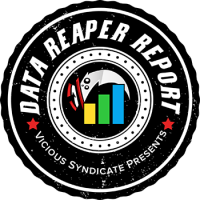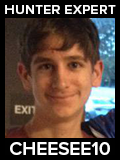
Welcome to the 186th edition of the Data Reaper Report! This is the first report following the release of the Darkmoon Races.
Contributing to the Data Reaper project through Hearthstone Deck Tracker or Firestone allows us to perform our analyses and to issue the weekly reports, so we want to wholeheartedly thank our contributors. Without the community’s contributions, there would be no project. Contributing data is very easy, so if you enjoy our content and would like to make sure it remains consistent and free – Sign up!
Quick Links
Class/Archetype Distribution | Class Frequency | Matchup Winrates | vS Power Rankings | vS Meta Score | Class Analysis & Decklists | Meta Breaker of the Week | How to Contribute | Credits
Number of Games
| Overall | 280,000 |
| Top 1K Legend | 16,000 |
| Legend (Excluding Top 1k) | 63,000 |
| Diamond 4 to 1 | 49,000 |
| Diamond 10 to 5 | 53,000 |
| Platinum | 33,000 |
| Bronze/Silver/Gold | 66,000 |
Class/Archetype Distribution
[TABS_PRO id=45278]
Class Frequency
[TABS_PRO id=45279]
Class Frequency Discussion
Welcome to the Darkmoon Races, where new decks and a new meta is emerging. The most hyped card of the miniset was Nitroboost Poison, and that has spurred Aggro Rogue into the top of the play rate charts. The majority of Aggro Rogues run the Dancer build, which revolves around buffing Self-Sharpening Sword. Following the introduction of Sparkjoy Cheat, the fringe Secret Rogue is transitioning into a faster build that’s easier to reliably recognize. This has allowed us to split Miracle Rogue apart, forming the Whirlkick and Secret archetypes. Currently, these decks are dwarfed by the presence of Aggro Rogue, even at top legend.
Druid has blown up following the introduction of Arbor Up, with Token Druid builds surging in play. We will note that Token Druid has no less than 4 different build paths, and they all strongly overlap with each other. As the archetype settles down and lists become fleshed out, we will attempt to split it apart into the surviving strategies, but there’s no guarantee. The 4 pseudo-variants are: Gibberling, Treant, Mountseller, and Dragon.
Warrior continues to exhibit increased play rates at top legend compared to the rest of ladder, with Enrage Warrior remaining one of the darlings of high legend, now experimenting with Nitroboost Poison. Control Warrior has been thrown into a wild refinement phase in which it attempts to answer the new questions that are brought about by the field. Bomb Warrior is unchanged. Big Warrior has crept up following the introductions of Barricade and Runaway Blackwing.
Lifesteal Demon Hunter is another high legend darling, and the deck even eclipses Enrage Warrior following what can only be described as a collective orgasm in response to the addition of Illidari Studies. Fel Demon Hunter is an emerging, hard-hitting deck that looks to take the soul out of Soul Demon Hunter and add a lot of cards with the word Fel in their names. Aggro Demon Hunter, much like Soul, now sees fringe play.
One unfortunate thing about the frequency graphs is that the current snapshot from the launch of Darkmoon Races doesn’t really do justice to what’s currently happening within an emerging Paladin archetype. Just a few days ago, a deck that was appropriately named by its creator as “Cheese Paladin” (more commonly known as ‘Ramp Paladin’, even though ramp isn’t a good way to describe what it’s doing) has begun to skyrocket in play and it’s very much on the path to become a very popular deck throughout ladder. With an extreme play pattern revolving around Alura and Nozdormu, it’s a hybrid of the cheesy Murloc decks of the past utilizing Prismatic Lens to cheat out Tip the Scales, and the cheesiness of Big decks. It’s just a big, greasy, double cheeseburger of a deck.
Libroom, Pure and even Duel Paladin (the ‘other’ Big Paladin deck) are showing up. Pure and Libroom Paladin display the normal play rate patterns we’re used to since they first emerged on the scene. Both are attempting to incorporate Libram of Judgment to their builds, with mixed results.
Enthusiasm for Control Priest has grown following the prospect of Rally resurrecting some of Priest’s strongest cheap minions in Veilweaver and Bloodweaver. Highlander Priest continues to carry the flag for the class’ competitive success at higher levels of play. We’re even seeing some experimentations with Corrupt Priest decks, as well as other weird decks we won’t be able to comment on in this report (such as running Illucia, C’Thun, Insight, and 26 other spells).
Warlock is seeing a lot of experimentation with late-game strategies: Control, Galakrond, and Quest can all be observed attempting to make their return to the meta with some of the new cards, but all of these decks fade away and disappear at top legend, where Zoo Warlock is the last deck standing.
Enthusiasm for Mage has also grown, with players hyped about a return of Cyclone Mage thanks to Conjure Mana Biscuit and Imprisoned Phoenix. Even the miracle combo deck of Mozaki Fireworks Mage has returned to the format, dwarfing the presence of Mage decks we’ve seen through most of this expansion (Highlander, Secret, Spell).
You can see quite a bit of Shaman and Hunter on the ladder climb, but these classes completely disappear at top legend, to an extreme degree. With no major news about successful decks from these classes, there is great concern that they’re just dead. Is there any promise within the fractured Shaman class? (Evolve, Aggro, Totem, Control, Quest) Have Highlander and Face Hunter finally collapsed under the weight of new strategies and new cards?
We’re about to send half of the meta into oblivion with a Thanos-esque snap of our fingers. Pay attention.
[TABS_PRO id=45280]

[TABS_PRO id=45281]
vS Meta Score
[TABS_PRO id=45282]
vS Power Rankings Discussion
We will first mention that the current meta is one the jankiest we’ve ever seen. It’s rare to see so many popular decks that range from overrated, to mediocre, to absolute garbage. This has led to a big win rate bloat through the top half of the table. This is common for every young or unrefined meta, but it’s particularly striking now. Once things settle down and the bad decks decline or disappear, you’ll see a big decline in win rates across the board.
- Paladin
- Cheese Paladin is not just a cute little meme. It’s an astonishingly dominant deck with a ridiculous matchup spread that currently displays almost no weaknesses whatsoever. We do expect that the meta will aggressively respond to it as it spikes in popularity. Some of its matchups will worsen, and some soft counters might be established, but we’re not sure whether there is an effective enough response to keep Cheese Paladin out of the top tier. At first glance, Cheese Paladin looks scarier than Evolve Shaman. It’s kind of ridiculous.
- Libroom Paladin is another deck that’s likely to stay elite, while Pure Paladin will continue to shine where it has always shined before. Even Duel Paladin looks good, though it’s hard to say where it will settle down once bad decks disappear and win rates deflate across the board.
- Rogue
- Let’s proceed with the first deck we can comfortably conclude is overrated. Aggro Rogue might have gotten stronger with Nitroboost Poison, but it’s far from a dominant deck. In fact, Whirlkick Miracle Rogue continues to display the best performance within the class, and is the only Rogue deck nestled in Tier 1 at top legend (where the meta is most advanced). Taking future meta trends into consideration, Aggro Rogue is likely to grow weaker and drop off. The play rates of these decks aren’t close to matching how good they actually are.
- Secret Rogue is okay, but still looks largely inferior to Whirlkick Rogue. We will note that unlike Whirlkick and Aggro, Secret Rogue is relatively unrefined and displays a positive scope for improvement.
- Druid
- Considering the highly experimental nature of Token Druid, the archetype looks like the real deal. Token Druid is the one deck we can see unseating Cheese Paladin from the top spot and become the new deck to beat. The Druid section provides an in-depth look into what Token Druid decks see the most success and are likely to stick around. It’s a very worthwhile read for those itching to get back into some Druid gameplay.
- Warrior
- Enrage Warrior never disappoints. This particular high legend darling has the receipts to back up claims it’s one of the strongest decks in the format. It’s very well positioned against Rogue, but Druid’s internal development could be critical to how good it will end up being in the future, and Cheese Paladin should become a growing problem.
- Control Warrior is lagging behind mostly because a new meta is asking for new tools to answer their threats, and the bad cards of yesterday might become the best cards of tomorrow. Post-refinement, Control Warrior should be very effective.
- Bomb Warrior isn’t about adjusting its build. The deck is entirely dependent on the meta slowing down in order to grow in power. It’s currently waiting for the Aggro Rogue hype to fade away. Big Warrior is extremely polarizing, and its survival is also dependent on external developments.
- Demon Hunter
- This high legend darling isn’t delivering. Lifesteal DH is still sitting at an astonishingly poor win rate, even at higher levels of play. This might have something to do with the fact that it struggles against Druid, doesn’t beat Warrior or Paladin, and only has the (declining) Rogue matchup to consistently pick up wins with. Perhaps, just perhaps, it’s not Tier 1 after all?
- Fel Demon Hunter is a failed experiment, and we see no reason to play it over Soul Demon Hunter. Aggro DH, as before the miniset’s launch, is a very strong ladder deck that drops off at high legend due to the prevalence of its counters.
- Priest
- Highlander Priest is the way Anduin can seriously challenge the big boys, and the deck is mostly a pocket pick to combat the high legend meta due to the prevalence of Token Druid and Enrage Warrior. We would have even tipped it to become a Tier 1 deck at top legend if it weren’t for Cheese Paladin’s emergence.
- Warlock
- Zoo Warlock is one of the strongest decks in the game, exhibiting a promising matchup spread with just a few issues (Whirlkick Rogue, Cheese Paladin). It will likely remain in the elite group due to its outstanding performance against the Druid class. Slower Warlock strategies look like some of the worst decks in the game. We attempt to curate them in the class’ section and there might be something playable within the junk, but finding it is no guarantee.
- Mage
- Cyclone Mage is terrible, and Fireworks Mage is even worse. These decks are two of the most generous donators of wins to the top half of the table. They won’t stick around for long, but Mage is viable and competitive through its established archetypes.
- Highlander Mage may not be looking too hot right now, but its standing against some of the strongest decks in the format (and struggles against some of the weaker ones) tells us that its future should be brighter.
- Secret Mage is boasting a win rate that we had to double-check to make sure it was right. We know that Secret Mage tends to beat many of the bad decks in the meta, so if they disappear, it should decline in its performance too. What’s different this time is that Druid is very strong, and this deck is very good against Druid. We wouldn’t write it off just yet.
- Shaman
- Totem Shaman is in a very similar spot to Secret Mage, where it destroys passive and janky decks that you expect to see disappear, but its great matchup against Druid means that it has a decent chance to survive through the refinement process of the meta.
- Aggro Shaman is still more than solid, and we wonder if any of these Shaman decks are going to be given a fair shake, or did the player base decide it was done with the class.
- Hunter
- Top legend players might be done with Hunter, but Hunter isn’t done at all. With no new cards or any build adjustments, the class keeps plugging away and produces good results.
Class Analysis & Decklists
Demon Hunter | Druid | Hunter | Mage | Paladin | Priest | Rogue | Shaman | Warlock | Warrior
Aggro Rogue was the most hyped deck before the release of the Darkmoon Races thanks to Nitroboost Poison. While it has certainly made an impact, it’s unlikely to become a dominant deck in the new meta. In fact, its power level is already eclipsed by Miracle Rogue.
The most popular variant of Aggro Rogue is the Dancer build, commonly referred to as “Weapon Rogue”. This variant takes advantage of Nitroboost Poison in order to build around Self-Sharpening Sword more aggressively. One takeaway from our analysis of the archetype is that Southsea Deckhand is stronger than Vulpera Toxinblade. Toxinblade is an awkward 3-drop that doesn’t line up with what the deck normally wants to do in the early turns. Deckhand works really well with Nitroboost Poison, giving you more burst and reach from hand.
Whirlkick Rogue continues to look like the best Rogue deck on ladder, though the competition is now fierce at the top of the meta and it may not be able to dominate the field like it did before the miniset’s release. The best build is the same as before, adding no new cards. We’ve seen some players add Flik for the Druid matchup, but the card is very weak in other popular matchups. It could make more sense a little further down the road in the meta’s development, so we don’t instantly hate it.
Secret Rogue has been the inferior Miracle Rogue variant for a while, and the addition of Sparkjoy Cheat hasn’t moved it out of Whirlkick’s shadow. Cheat is a great card though, and promotes a slightly different build from before that runs a bigger secret package, including the tempo-focused Bamboozle. Questing Adventurers have never been great performers in this deck, so with the synergy-conflicting Bamboozle looking strong, the deck might be ready to let them go.
We’ve also seen some players experiment with Nitroboost Poison in Secret Rogue, and with the deck looking to play faster through Sparkjoy Cheat, it could be better for the archetype to become more aggressive and run burst in order to close games faster. For that purpose, Nitroboost Poison has good synergy with Eviscerate, but we’re still not sure whether the card is better than Shadowstep. It might depend on how the meta continues to shape up.
Malfurion is back in business, with Token Druid looking like one of the strongest decks in the format thanks to the addition of Arbor Up.
Token Druid has seen a lot of experimentation, with many different cards and packages that often overlap, making separation of variants currently unreliable. Our analysis has shown us that the archetype has two primary deckbuilding paths that look strong and are philosophically different.
The first variant is the Gibberling Token Druid. This is the strongest Druid deck on ladder today thanks to its great standing against some of the best decks in the format. It destroys other Druids, obliterates Aggro Rogue, performs well against other aggressive decks, and has the potential to develop a favorable matchup against Cheese Paladin. The reason why it is more successful in these matchups is that it takes over the board in the early game and snowballs like no other deck, much thanks to Gibberling.
We’ve found that this variant wants to cut some of the slower cards that see a good amount of play within the class. We don’t run ramp because of our low curve, so Soul of the Forest is very clunky to set up, and Solar Eclipse suffers from a similar problem where it usually shines when games are already decided. Blessing of the Ancients is also too slow.
Instead, you want to focus on winning the board in the early turns, so Lunar Eclipse is quite effective. BEEEES!!! is another removal card that generates tempo, so we highly recommend it. Just remember to always run two Savage Roars and you’re good to go.
The second variant is the Treant Token Druid. This deck is slightly weaker than Gibberling, but its matchup spread is noticeably different so the meta could definitely shift in a direction that favors it more. Treant Druid is far weaker in faster matchups, such as Aggro Rogue and Zoo Warlock. It never beats Cheese Paladin, and it struggles against the Gibberling variant. But, it performs significantly better against slower decks thanks to its increased longevity, stickiness, and reach. Warrior, Priest, slow Warlocks, Miracle Rogue, Libroom Paladin, and Lifesteal DH are the matchups it looks to take advantage of.
This deck runs Overgrowth and a higher curve, so Soul of the Forest and Solar Eclipse are strong combo cards for the late stages of its games. Guess the Weight is underplayed, as it’s a very good source of card draw alongside Aeroponics and Fungal Fortunes, and one that is significantly stronger than Rising Winds in this variant. Goru is gargantuan against Warrior, so it gets the nod as the only minion in the build.
Finally. Always. Run. Double. Savage. Roar. Period.
Clown Druid isn’t in a great spot, but it can get stronger if the meta slows down. It’s always been a very polarizing deck that looks to farm decks that give it time to develop its game plan, but the current meta is a bit too focused on early game snowballing for its liking.
The featured build runs Moonfang as a 5th beast for Guardian Animals, adds Crystal Power for survivability and utilizes Ysera as a faster win condition compared to Y’Shaarj or Yogg-Saron.
Warrior is making small tweaks and adjustments thanks to new cards and a changing meta, and we fully expect it to be one of the strongest classes in the format when the dust settles.
Enrage Warrior is showing promising results with Nitroboost Poison, encouraging a more aggressive direction that cuts the ETC combo and builds on the Kor’kron/Shield of Honor win condition. We recommend running two Kor’kron Elites and cutting Grom, as they work better with Poison and are great follow-ups to Sword Eaters. This build looks to pressure the opponent’s life total earlier and can win a large percentage of its games without a big damage combo.
Control Warrior continues to suffer from the popularity of sub-optimal builds, dragging down its performance, but we can see it establishing itself as a very successful deck once it properly adjusts for the field. One of the most dramatic changes from the pre-miniset meta is the strength of Bladestorm. Previously a card we advocated cutting, it may now become a core 2-of thanks to its outstanding performance against Druids.
If you’ve been reading these reports over the last two months, you should already know: if you see a Warrior deck running C’Thun, stay the hell away.
Warrior also boasts other archetypes. Bomb Warrior is the same deck it’s always been, currently kept in check by Aggro Rogue and Paladins, but always a threat to become stronger should the meta slow down. Big Warrior is a cute, playable and harmless deck that received a couple of new cards in Barricade and Runaway Blackwing. We can’t say anything about experimentations in Pirate Warrior just yet, as the deck’s play rate is too low.
Demon Hunter has a wealth of options available to it, though none of them are particularly dominant.
Lifesteal Demon Hunter has received a lot of hype on the back of the addition of Illidari Studies to the deck, and while it’s definitely a good card in it, Lifesteal DH hasn’t skyrocketed to the top of the meta like some have led you to believe. It still exhibits a negative win rate at higher levels of play, as its matchup spread is littered with problems.
But it’s the next Patron Warrior, right?
The Darkmoon Races have introduced a new Demon Hunter deck to the format. Fel Demon Hunter is essentially a Soul Demon Hunter deck without the souls. It turns out that not having a soul seems to have a negative impact on your win rate. We feature the best build we could find for the archetype, but we think this deck is essentially obsolete.
The superior Soul Demon Hunter received a few upgrades. Luckysoul Hoarder seems to be a strong card in the deck that is wrongfully ignored. Cutting Malicia, a popular choice recently, also seems to be missing the mark (she is far stronger than Kayn). You want to maximize your shard generation, which then turns Malicia into a consistently game-winning card. Illdari Studies is great in Lifesteal DH, but not so much in this deck.
Aggro Demon Hunter faces a similar story to its pre-Darkmoon Races days. It’s a very powerful deck on ladder, but dips at higher levels of play where some of its hardest counters spike in play. There are no changes in its build.
- Demon Hunter Class Radar
- Lifesteal Demon Hunter
- Fel Demon Hunter
- Soul Demon Hunter
- Aggro Demon Hunter
Paladin is now home to the most broken deck in the format, with a nonsensical matchup spread (that should mellow out, to be fair), but most importantly, a ridiculous play pattern that is the definition of toxic gameplay.
Cheese Paladin, also known as the poorly named Ramp Paladin, is an abomination that was built and popularized by Conway6288. This deck has actually been around for a few weeks, well before the release of the Darkmoon Races, but only gained traction recently as a result of the addition of the offensive Alura/Tip the Scales package.
No longer just a passive “big” deck with Nozdormu, Alura has allied with murlocs to bring you the dumbest Hearthstone experience of the current Standard year. No deck can reliably handle the kind of swing turn that is enabled by her spellburst combo. Cheese Paladin effectively has two copies of Barnes: one of them is stronger and more warping than the original Barnes, while the other can be consistently tutored by Redscale Dragontamer.
Add two copies of Barnes to an intimidating late-game package of Old Gods, and you have the best deck in the game, at least for now.
What’s scary is that Cheese Paladin is not even fully refined yet. At the moment, many builds forgo Strongman, even though it’s a very powerful card and is significantly better than Circus Amalgam. It’s even a bigger priority than running Barov/Brooms. We can see the meta heading in a direction where the Barov/Broom package becomes core (and we recommend running this package for that reason), but it’s currently more matchup dependent than people think. Armor Vendor is very good right now because of the Aggro Rogue matchup, but as this deck is likely to decline, the value of the card should drop.
Finally, if it’s any confirmation to how silly this deck is, Sphere of Sapience looks like a good card in it.
Paladin has other very strong decks. Libroom Paladin is comfortably Tier 1, and probably needs a bit more work in its refinement, with two interesting directions it can choose from.
The first is more fleshed out, and involves running Crabriders. Crabriders have great synergy with Libram of Wisdom and Blessing of Wisdom. Basically, these crab riding murlocs are very strong when well educated. The cycling power then fuels Devout Pupil, which is a very good card in this variant.
The second is more experimental and addresses an elephant in the room. Libram of Judgment is an extremely powerful card that we can see has the potential to make a huge impact in multiple matchups, but current Libroom Paladin builds cannot consistently corrupt it. The featured Judgment build maximizes cycling power through Novice Engineer in order to consistently find our Libram discounts, but also runs Silas and Siamat as additional Judgment corruptors. Both of them serve a similar role (removal) while synergizing with the deck’s general game plan. We’d like to see more data on this direction.
Pure Paladin already has the late game necessary to corrupt Libram of Judgments (Yrel, Crusader), which makes them a great fit. Once again, we’ll reiterate that Liadrin is a bit of a trap in this archetype, and she now makes even less sense in the deck. The main question comes down to Shotbot vs Braggart, and the correct choice is dependent on the pace of the meta.
Finally, we have Duel Paladin, which is showing surprisingly good results after adding Barricade and Runaway Blackwing. The problem is that it’s unlikely to gain traction due of the presence and dominance of Cheese Paladin, which is the superior “Big” Paladin deck.
True to its identity, Priest has been more focused on pissing players off rather than winning Hearthstone games. It’s certainly capable of the latter, yet ever so often it comes back to the memes.
Control Priest has been attempting a revival through Rally and its ability to resurrect Sethekk Veilweavers and Nazmani Bloodweavers, but the deck simply falls flat. Control Priest shares an inkling similarity to Cyclone Mage, where all the pieces look and feel great yet the results don’t back it up.
Highlander Priest is where the class’ competitive hopes lie and where Priest genuinely displays a decent win rate at higher levels. Since the meta is still very unsettled, it’s likely that its build will chop and change. What’s clear is that Hysteria is a good card (even after the small nerf).
Warlock either looks amazing or terrible, there is no in-between. Zoo Warlock is one of the strongest decks in the format, boosted by the rise in Druid and requiring no new cards to find great success in the new meta. The rise of Druid is tempting us to add back Revenant Rascal over Animated Broomstick, though it might not be the time to do that yet. As we’ve said before Darkmoon Races, Mosher is core at this point and can never be touched.
Control Warlock looks horrible, but there might be a treasure hidden underneath all the trash. The key to success with this archetype is to stack as much life gain as possible. This means we run the amazing Armor Vendor (this 1-drop is gargantuan in Warlock), maximize the Soul Fragment package through Luckyoul Hoarders, and add Khartut Defenders on top of them. Hysteria is also a great card that lessens the reliance of defensive Warlock decks on Plague of Flames.
We’ve found that Rustwix is a pretty decent card in the deck, and contrary to popular perception has synergy with Tickatus. There are two reasons for it. The first is that many of the primes it generates can corrupt Tickatus. The second is that both are demons, so they can be packaged together alongside Jailers and Voidrinkers to make Sense Demons a pretty strong tutor effect.
Galakrond Warlock can run a very similar concept to Control Warlock, which is featured below, but we actually think that the addition of Hysteria (and indirectly, Sense Demons) has tipped the scales towards non-Galakrond builds. Control Warlock’s win rate might be worse now, but we estimate that it has a higher ceiling post-refinement.
Jaina has emerged as one of the biggest scammers of the format, tempting countless players with her flashy decks and endless portrait options, only to lead them to their ladder downfall.
Cyclone Mage is a great Hearthstone deck by every measurable metric except for that tiny issue about winning games. Imprisoned Phoenix and Conjure Mana Biscuit are good additions that weren’t enough to lift it to a reasonably competitive win rate.
Mozaki Fireworks Mage is the worst deck in the format, yet it happens to do quite well against Cheese Paladin, the best deck in the format. Other than this one hilarious claim to fame, there’s not much else to say about it. It’s a very bad deck that should disappear within a week or so.
Mage does have some playable decks, though they aren’t as flashy. Highlander Mage can take advantage of Glacier Racer and lean towards running more freeze effects for an additional board clear (which is useful against Druid/Rogue). Armor Vendor is a great card that covers the archetype’s biggest weakness in faster matchups (getting burnt out). Keywarden Ivory is a nice value card.
Secret Mage is doing incredibly well considering it’s completely ignored by the player base. Its high win rate is a byproduct of the jank meta, as it obliterates many of the fraudulent decks that are overplayed. Its win rate should drop, but its standing against some of the strongest decks in the meta (such as Token Druid) could keep it around.
Shaman has been a very quiet Darkmoon racer, but it actually looks decent despite not seeing much play.
Totem Shaman, much like Secret Mage, benefits from beating some of the worst decks of the format, but the rise of Druid may help it stick around as a viable and competitive strategy. We see a similar effect with Evolve Shaman, another deck that looks strangely playable, though clearly looks like the worst option between the two.
And then we have Aggro Shaman, which may not beat Token Druid, but has an assortment of other good matchups to benefit from. This deck has already looked good before the Darkmoon Races yet hasn’t received any attention. It’s still solid now.
Shaman isn’t as dead as it may seem.
You’d think Hunter was Tier 16 now, but both of its archetypes, which feel like they’ve been around forever, still produce good results that understandably worsen at higher levels of play where the field is more hostile to these decks.
Highlander Hunter is incredibly resilient, seeing nerfs to its best cards, seeing no upgrades from the Darkmoon Races, yet continues to produce significantly better results than many of the overhyped strategies you’ve heard people swear were the best decks in the game over the last week.
This is the story of Rexxar. A half Orc, half Ogre. Unwelcomed by both races. Complained about for being too powerful by the Bronze player. Written off as too boring and “simple” by the high legend player. The champion of the (horde) ladder grind. He hunts alone.
The current meta will be defined by the upcoming battle between Cheese Paladin and Token Druid. We suspect that should Cheese Paladin resist Druid’s attempts to counter it effectively, the meta could spiral into a very degenerate direction that will make the Evolve Shaman meta of a few weeks ago look healthy. However, if Druid becomes the class to beat, it opens up more possibilities to create a dynamic meta since Token Druid is far more interactive and carries weaknesses that can be exploited by other classes.
Malfurion as Hearthstone’s meta hero? We’ve seen it all now.
Preparing our weekly article requires a significant amount of time and effort from many individuals. We would like to wholeheartedly thank our current Patreons, whose generous donations help us fund computing and server costs.
vS Gold is a new membership plan aimed to support our efforts towards improving our content and data analysis while receiving some bonuses and extra features.
Tier 3+ Patrons
Special thanks to Leo G, Aaron B, Jed M, Drew M, Alan J, Zolstar, Sean H, Steve F, Andrew N, NObdy, Alonso P, James Y, Je-ho, Ziqiao Y, Stephen H, William H, Patrick L, 1RiceBowl1, Alex S, PeejTreon, Josh G, Matthew H, Bruno B, Amir, Matthew P, nmbrthry, amenbrotep, Karhu, Fisherington, Christopher N, Eric F, Eric L, Munchma, BraveLittleStove, Lime, Yasin, Fireproofflame, and Weston W for supporting us this month.
Contributors
Here are all the people that participated in bringing you this edition of the vS Data Reaper Report:































Angelica was married and had a toddler son in tow when she met Alexander.
Why do you never give control shaman any love? The deck is at least viable enough to make the list
awesome thx!
“This is the story of Rexxar. A half Orc, half Ogre. Unwelcomed by both races. Complained about for being too powerful by the Bronze player. Written off as too boring and “simple” by the high legend player. The champion of the (horde) ladder grind. He hunts alone” this is high literature
Thx for the report. Sparkjoy Secret Rogue code has 29 cards, one Nitroboost Poison is missing.
Excellent as always. Thanks VS. GME 💎🙌